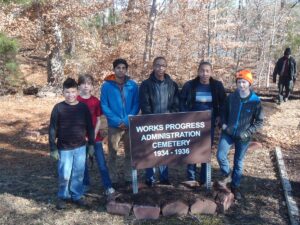CEMML’s cultural resources team at Joint Base Langley-Eustis won a National Public Lands Day (NPLD) award for preserving Depression-era graves at Fort Eustis and increasing the local community’s awareness of history. The NPLD is the United States’ largest, single-day volunteer effort focused on public lands. Its goal is to bring together federal land managers and local communities on projects that emphasize “shared stewardship of our valued, irreplaceable natural and cultural resources.”
Since the Department of Defense joined the NPLD partnership in 1999, it has awarded nearly $2.8 million for more than 500 projects. In 2018, a team of CEMML archaeologists joined Fort Eustis military personnel and their families, local Boy Scout troops, and other members of the local community in an NPLD project to preserve a historically significant Works Progress Administration (WPA) Cemetery, increase awareness of local history, and highlight Fort Eustis’s cultural resources stewardship program .

Over eight million unemployed workers, many of them migrants, were hired by the WPA from 1933 through 1941. The Army provided much of the leadership and infrastructure for the WPA. For example, the Army built more than 1,300 work camps, including one at Fort Eustis, that utilized existing Army barracks. Even before the Great Depression began, migration within the U.S. population was substantial. A considerable number of seasonal workers, veterans, homeless, and other transients sought employment.
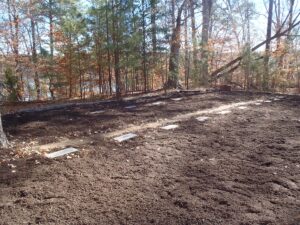
The WPA operated a camp for transient, indigent workers at Fort Eustis from December 1934 through October 1936. Camp workers maintained segregated cemeteries for those who died during that period. One cemetery includes the graves of nine African Americans, and the other includes the graves of 13 Anglo Americans.
These graves were maintained by the Army until Fort Eustis and Langley Air Force base were consolidated in 2010. Since then, maintenance of the cemeteries has been minimal. The NPLD project enabled military and community volunteers to weed and mulch the cemetery, install a new wooden border around the upper plot, prune vegetation, and reduce the likelihood of erosion.
Related Content
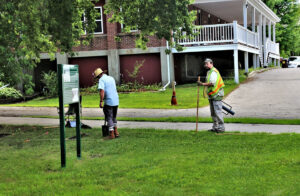
CEMML archaeological survey explores early 20th century history of Fort McCoy
An archaeological survey conducted by CEMML personnel in the summer of 2022 was initially meant to investigate the creation of several hundred concrete tent pads at Fort McCoy, Wisconsin. Research into the tent pads, dating from around the early 20th century, also unearthed additional information about other possible known archaeological features and sites around what is referred to as “Old Camp McCoy.”

Canine detectives help locate long-forgotten burials at a Virginia military base
Mulberry Island, Virginia, the location of Joint Base Langley-Eustis, has a long history of human habitation, dating back 10,000 years. The area has more than 230 archaeological sites, including cemeteries with unmarked graves. CEMML, in partnership with the Fort Eustis Cultural Resources Program, is using human remains detection dogs to help identify unmarked burial sites to better understand, honor, and preserve the area’s rich history.
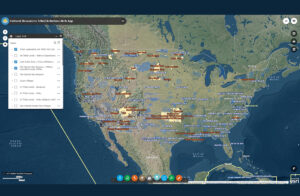
CEMML partnership helps ensure Native American voices are heard in military planning
Much of the roughly 26 million acres that the Department of Defense oversees nationwide was once occupied by Native American tribes. Military installations are legally required to consult with interested tribes when carrying out projects that affect natural and cultural resources. A tool developed by CEMML and the Air Force Civil Engineer Center helps determine which tribes may have an interest in an installation’s land or airspace.
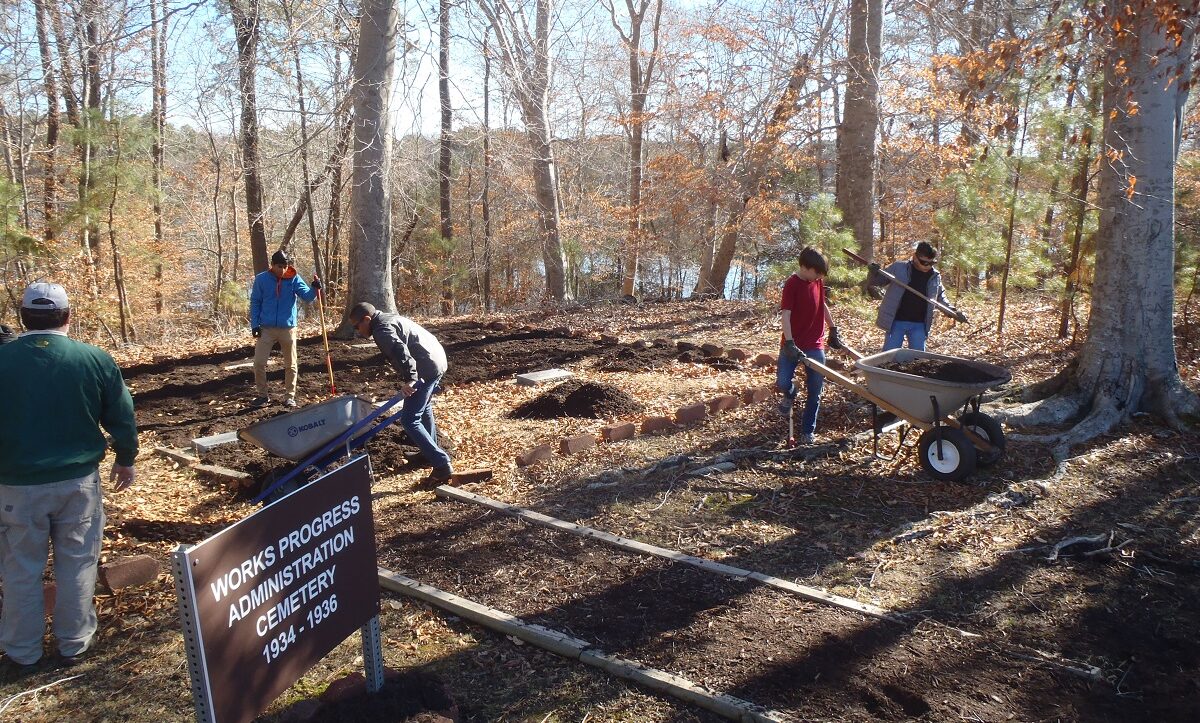 Fort Eustis Cultural Resources Manager Chris McDaid directed volunteers from Boy Scout Troop 45, military personnel, and their families in cleanup activities.
Fort Eustis Cultural Resources Manager Chris McDaid directed volunteers from Boy Scout Troop 45, military personnel, and their families in cleanup activities. 